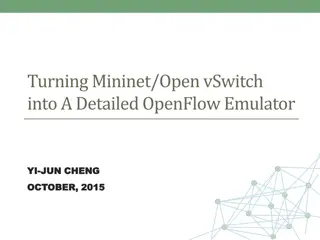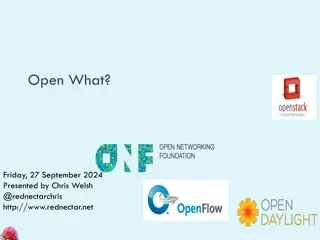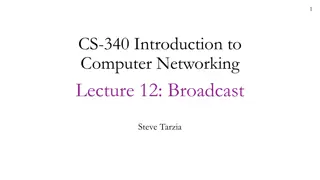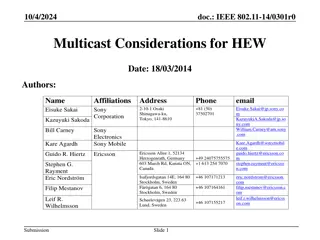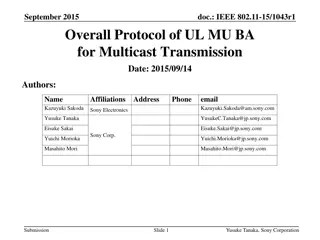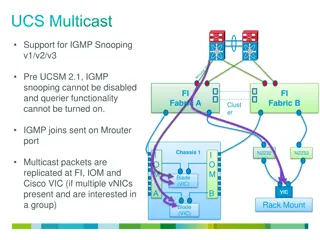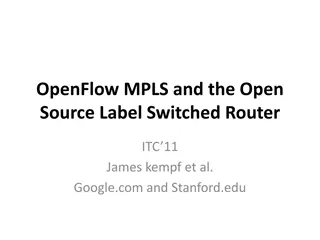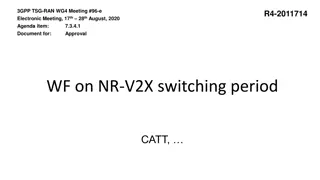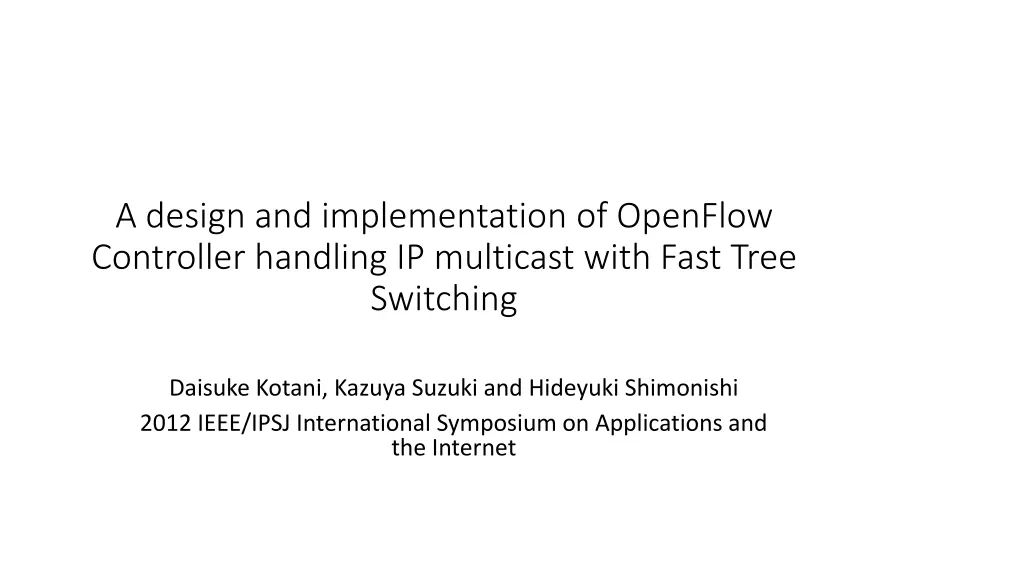
Implementing OpenFlow Controller for IP Multicast with Fast Tree Switching
This paper discusses the design and implementation of an OpenFlow controller for handling IP multicast with fast tree switching. It addresses the challenges of reconstructing multicast trees during network failures, proposing an algorithm to reduce packet loss using OpenFlow. The related works cover IP multicast group management protocols like IGMP and routing protocols like PIM-SM, PIM-DM, and DVMRP. The implementation involves setting up multicast trees for efficient data transmission in modern multimedia applications.
Download Presentation

Please find below an Image/Link to download the presentation.
The content on the website is provided AS IS for your information and personal use only. It may not be sold, licensed, or shared on other websites without obtaining consent from the author. If you encounter any issues during the download, it is possible that the publisher has removed the file from their server.
You are allowed to download the files provided on this website for personal or commercial use, subject to the condition that they are used lawfully. All files are the property of their respective owners.
The content on the website is provided AS IS for your information and personal use only. It may not be sold, licensed, or shared on other websites without obtaining consent from the author.
E N D
Presentation Transcript
A design and implementation of OpenFlow Controller handling IP multicast with Fast Tree Switching Daisuke Kotani, Kazuya Suzuki and Hideyuki Shimonishi 2012 IEEE/IPSJ International Symposium on Applications and the Internet
Introduction IP-multicast is useful in modern multi-media applications for transporting large data from single point to one or multiple receivers But, there are still some serious problems of IP based multicast One of them is reconstructing multicast tree while network failure occurs This will cause packets loss that is intolerable Traditionally, we use prepare redundant multicast tree to overcome them However, it require centralized computation to computing tree that is surprisingly suit for OpenFlow/SDN Kotani et al. design a algorithm to reduce packet loss while multicast tree reconstruction with OpenFlow
Related works For IP multicast group management . IP multicast use IGMP to manage Join/leave from multicast group IP multicast use PIM-SM, PIM-DM or DVMRP for routing These protocols use unicast routing or flooding Hence, it will takes much time to recover multicast tree There is better method for efficient using network bandwidth called IGMP snooping, but it will limit sender s location
Related works For multicast tree Multicast Extension OSPF can centrally compute multicast trees But, it flood group member information to all routers P2MP MPLS enable traffic engineering in multicast such as bandwidth guaranteed multicast and fast failure recovery using MPLS fast reroute mechanism But P2MP MPLS can not be used in receivers dynamically join/leave case, because the path is set up by sender side
Set up multicast tree for multicast group Early mechanism need to modify flow entries in many switches They propose following rules to speed up multicast tree switching: Multiple multicast tree of same group coexist in the network Unique tree ID for each multicast tree which will be embedded into packet header as Ethernet destination address Sender switch rewrites header of multicast packets to that the tree ID embedded
Procedure of switching multicast tree 1.Calculate alternative tree and assign new ID which will be mapped to Ethernet destination address 2.Set up flow entries of the alternative tree in the switches other than the sender switch 3.Replace the flow entry in the sender switch 4.Remove un-used flow entries from switches
IMPLEMENTATION OF OPENFLOW CONTROLLER Controller compute multicast trees and set up flow entries that are required to deliver multicast packets into the switches Controller requires the senders and receivers locations in the network and topology information to compute multicast trees Sender s location is used to determine the root of a multicast tree and the leaves of the tree are the receivers locations Topology information is used to define the graph to calculate trees
Discussion & Conclusion Some factors need be considered in real enviroments: 1) round trip time 2) packets other than multicast Future works: 1) reduce the flow entries of backup multicast trees 2) a method to switch trees faster in the enviroments that RTTs are long







